A resurgence in COVID-19 cases and hospitalizations at the end of 2020 has underscored the challenges that remain for small businesses in Nebraska. Many of the state’s small businesses closed temporarily in the initial months of the pandemic, but gradually reopened through the summer. With year-end approaching, and the virus still spreading, some businesses have closed again. Although Nebraska businesses generally have outperformed the nation throughout the pandemic, the outlook for small businesses will be particularly important in sustaining Nebraska’s economic recovery.
Nebraska’s Economic Recovery
With 2020 drawing to a close, several key measures of Nebraska’s economy have returned to their pre-pandemic strength. After surging to 8.7% in April, the state’s unemployment rate has since retreated to 3.0%. Through October, Nebraska’s unemployment rate was the lowest in the country and was less than half the national average (Chart 1). Similar to the nation, however, part of the recent decline in Nebraska’s unemployment rate has been due to fewer people looking for jobs.
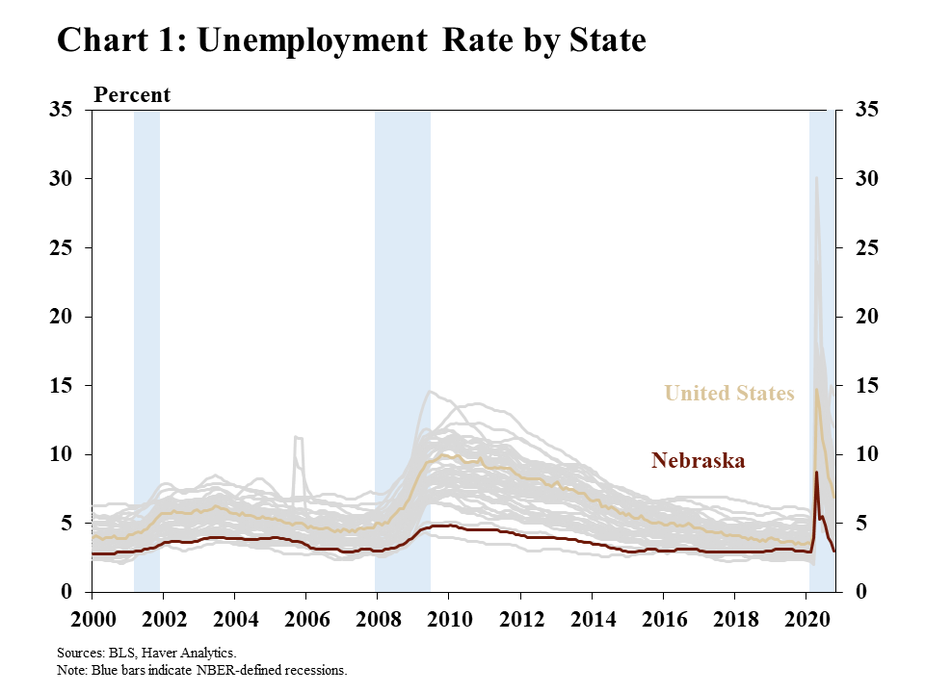
Since April and the initial spike in business closures, job gains have been broad based across numerous industries. As businesses that rely on in-person gatherings closed temporarily or restricted the number of patrons onsite, employment in the leisure and hospitality industry collapsed, shedding more than 37,000 jobs by April (Chart 2). Most other industries also experienced significant, though smaller, job losses. From April to October, however, employment has recovered significantly, but not fully. For example, businesses in the leisure and hospitality industry, including hotels and restaurants, brought back about 24,000 employees.
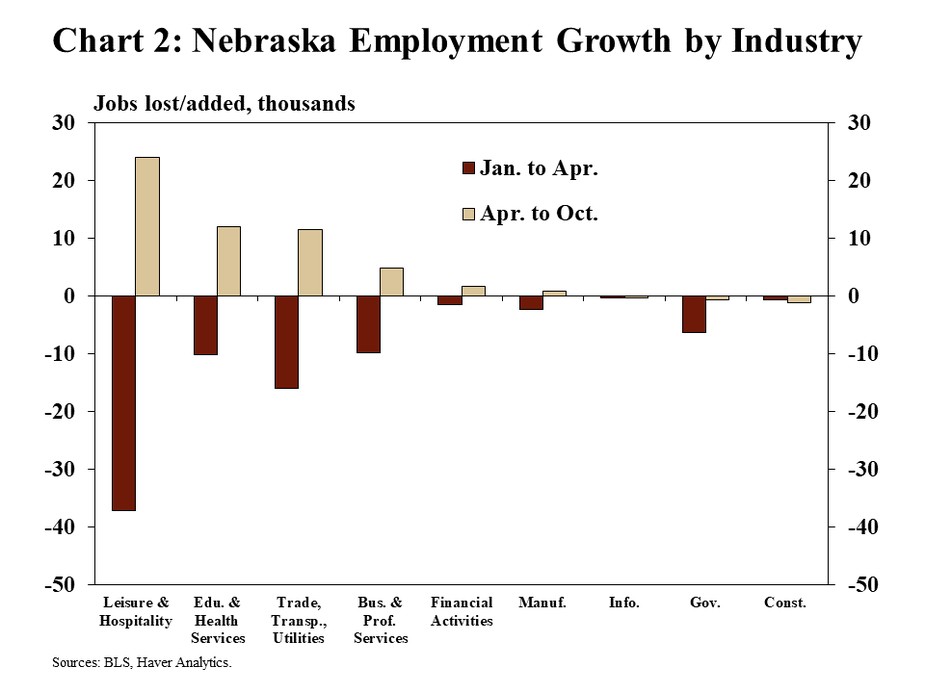
Across the state, unemployment rates mostly have returned to pre-pandemic levels. Through October, only three counties had an unemployment rate higher than in January (Map 1). In Douglas County, the state’s most populous, unemployment was slightly less than in January. While lower unemployment rates do not necessarily suggest a full recovery, unemployment appears to have declined faster than might have been expected earlier in the year.
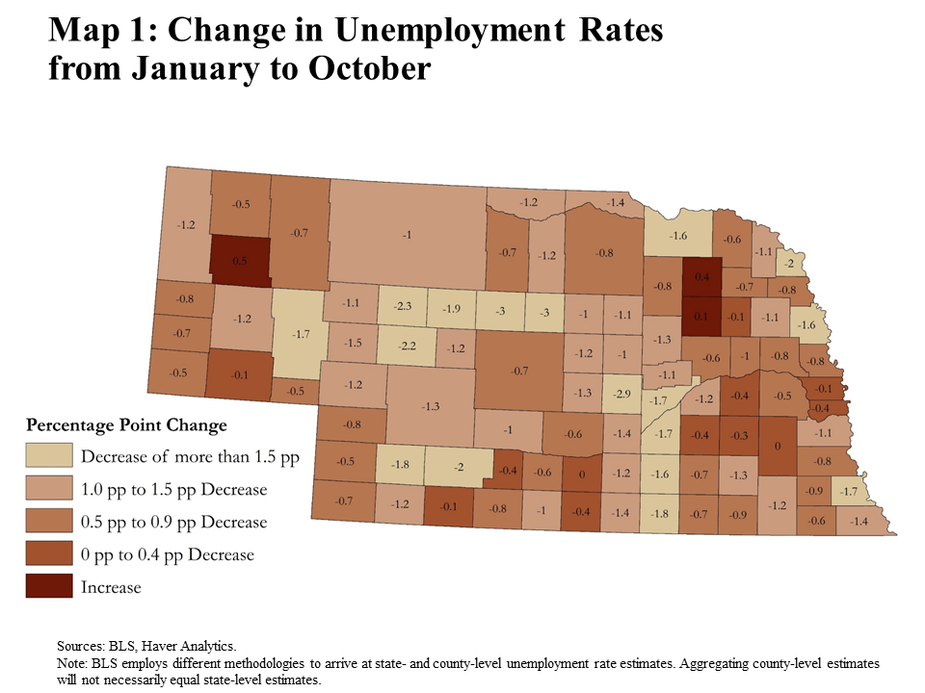
Small Businesses Important to Nebraska’s Recovery
Crucial to Nebraska’s economic recovery, the state’s small businesses have fared better than those in most other states despite being severely impacted by the pandemic. Though still weaker than earlier this year, revenues generated in November by the state’s small businesses were the third strongest in the nation relative to January (Chart 3). On average, small business revenue was down about 17% from the beginning of 2020, but has improved since April when revenues were down approximately 30% from early in the year.
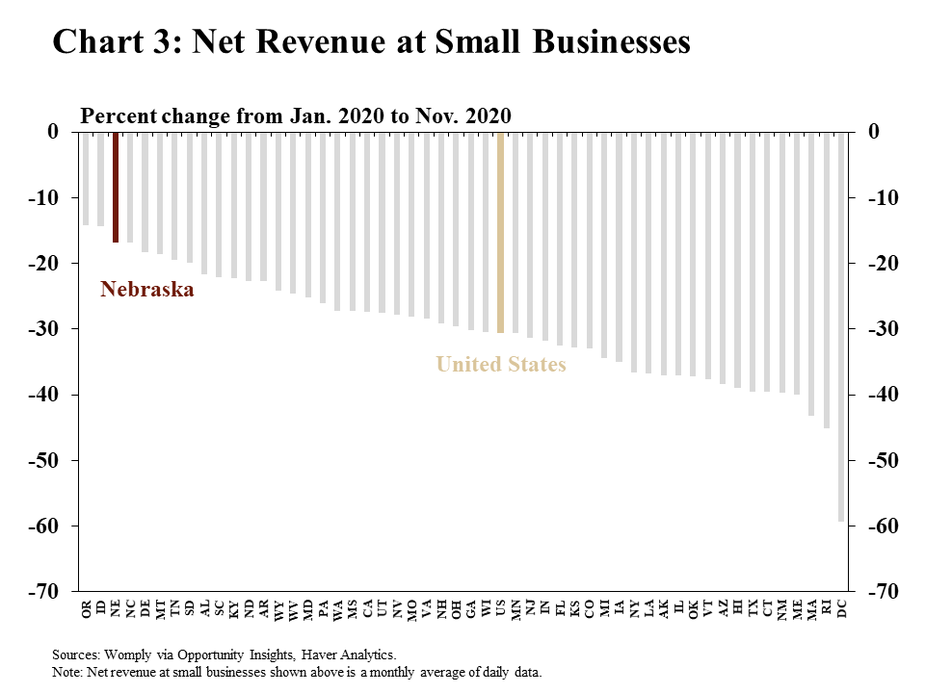
Prospects for small businesses in Nebraska are especially important, in part, because they account for a large share of employment. Firms with fewer than 50 employees accounted for 48.8% of the state’s employment at the beginning of 2020 (Chart 4). Nationally, small businesses with fewer than 50 employees accounted for only 43.8% of all jobs. In addition, almost two-thirds of all firms in the state have fewer than five employees, underscoring the importance of factors affecting small businesses.
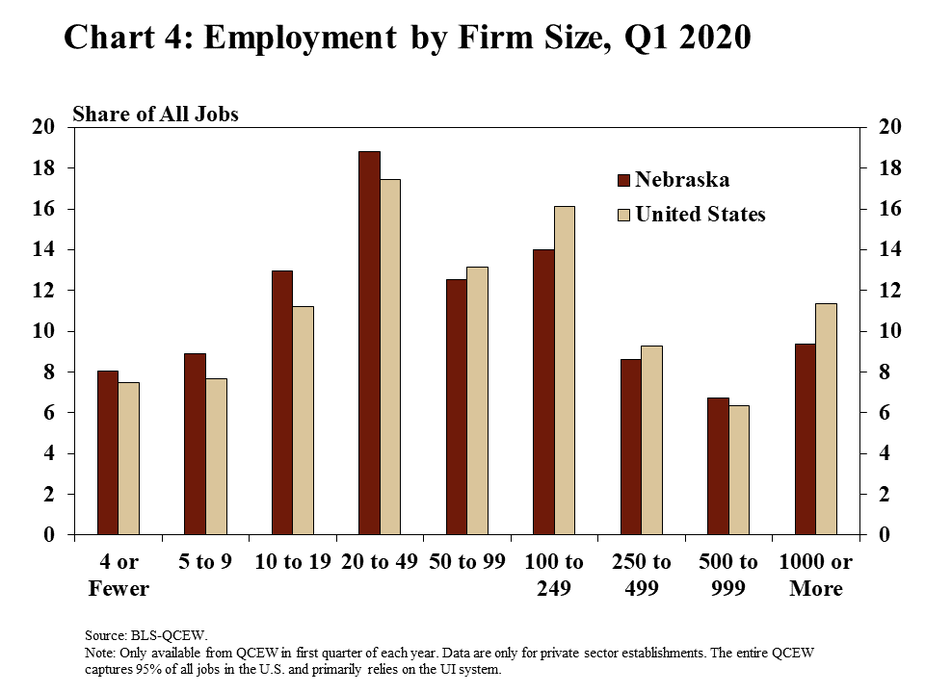
Some small businesses in Nebraska may have fared better during the pandemic than the nation because of the nature of their industries. Nebraska has a higher concentration of small businesses in several key industries, which generally continued to operate during the pandemic (Chart 5). These include wholesale trade, transportation, utilities, construction and agriculture. In fact, these industries comprised 26% of all small businesses in Nebraska, but only 19% nationally.
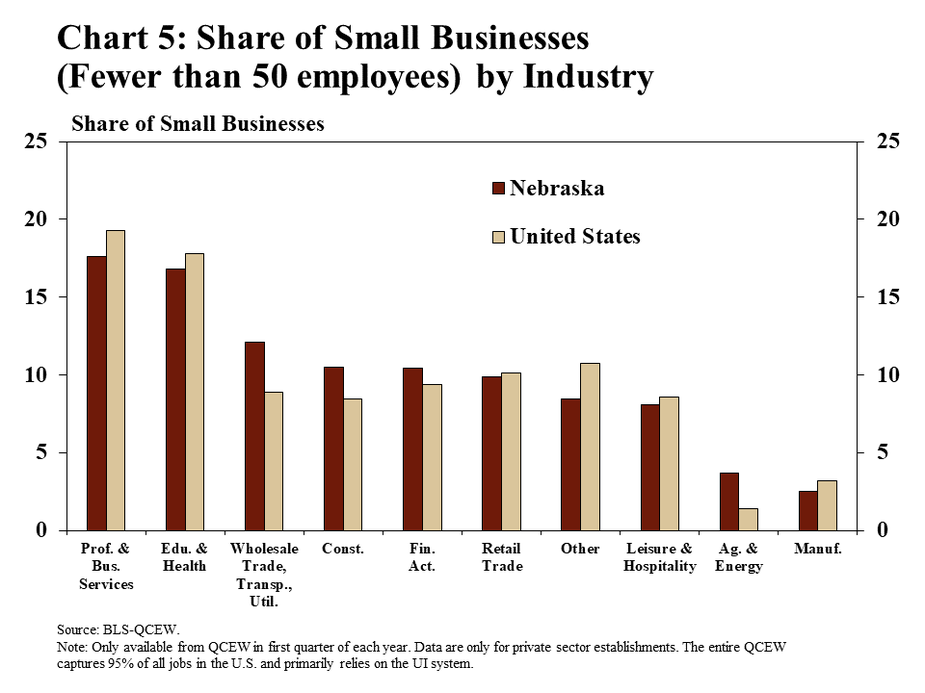
Emergent Risks for Nebraska Small Businesses
Despite a generally more positive environment for small businesses in Nebraska, risks have increased in recent weeks. Throughout the pandemic, small businesses in Nebraska have reported fewer closures and layoffs and a stronger revenue outlook compared with the nation. In November, however, a relatively large number of small businesses in the state reported they recently had reduced employment (Chart 6). By the end of the month, 11.5% of small businesses in Nebraska reduced their employment, on average, more than the nation for the first time since the onset of the pandemic.
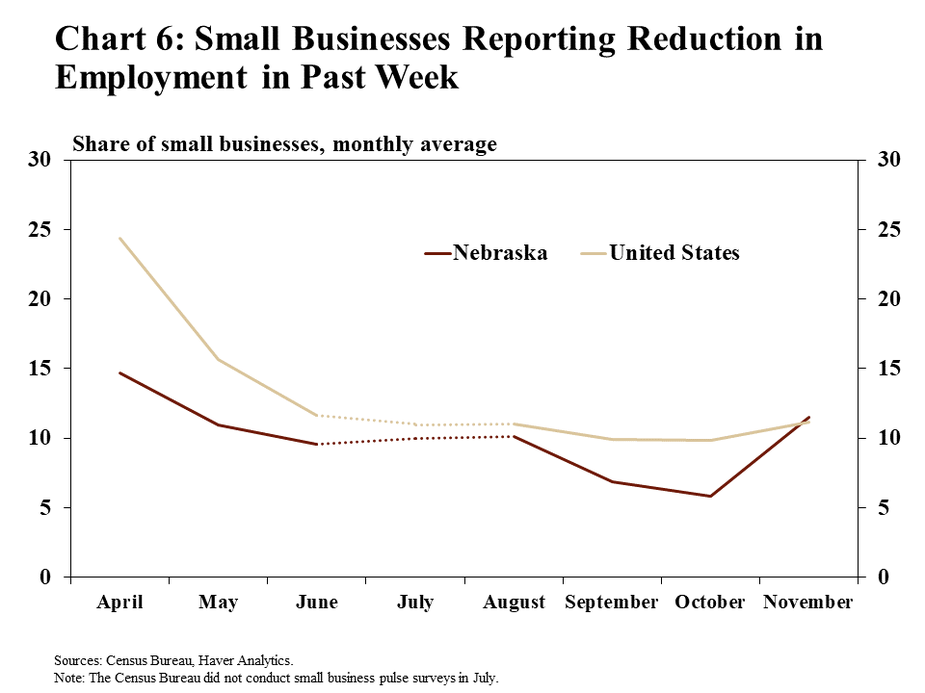
Operating capacity also has improved very little among Nebraska small businesses in recent months. According to surveys conducted by the U.S. Census Bureau, the number of small businesses that indicated a decrease in operating capacity by more than 50% has increased slightly since the summer months. (Chart 7). In contrast, the share of small businesses nationally indicating a reduction in operating capacity of this magnitude declined from 23% in August to 17% in November. While small businesses in Nebraska have remained in a stronger position than the nation, recent developments highlight a potential risk.
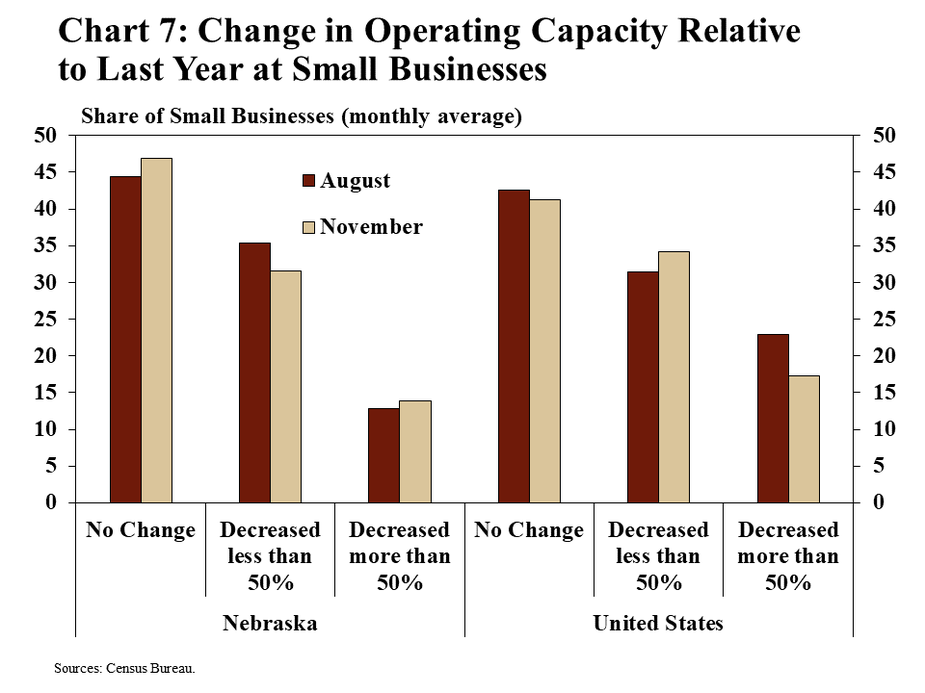
The weakness among small businesses toward year-end seems to have been linked significantly to developments with the pandemic. Since the onset of the pandemic, a much smaller percentage of small businesses in Nebraska indicated the pandemic was having a large and negative effect on their operations relative to the nation (Chart 8). Since September, however, the share of Nebraska small businesses reporting a large, negative effect has increased from 21% to 23%, while declining from 33% to 30% nationally.
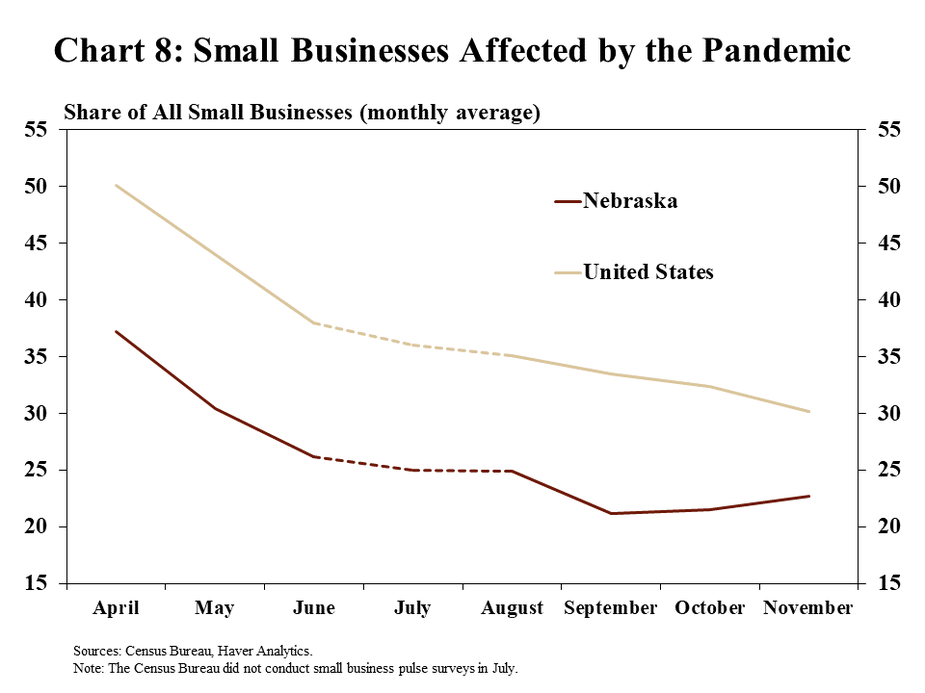
COVID-19 and Small Businesses
Similar to other states in the Midwest, the spread of COVID-19 in Nebraska increased sharply in October and November. Since the end of September, the number of new cases in Nebraska increased from 470 a day to more than 1,700 (Chart 9). The availability of beds in intensive care units in Nebraska’s hospitals also dropped to its lowest level in the week before Thanksgiving, accentuating the concerns about more severe outcomes from the pandemic with winter approaching. The total number of COVID-19 related hospitalizations also increased sharply from September (about 200) to more than 750 by early December.
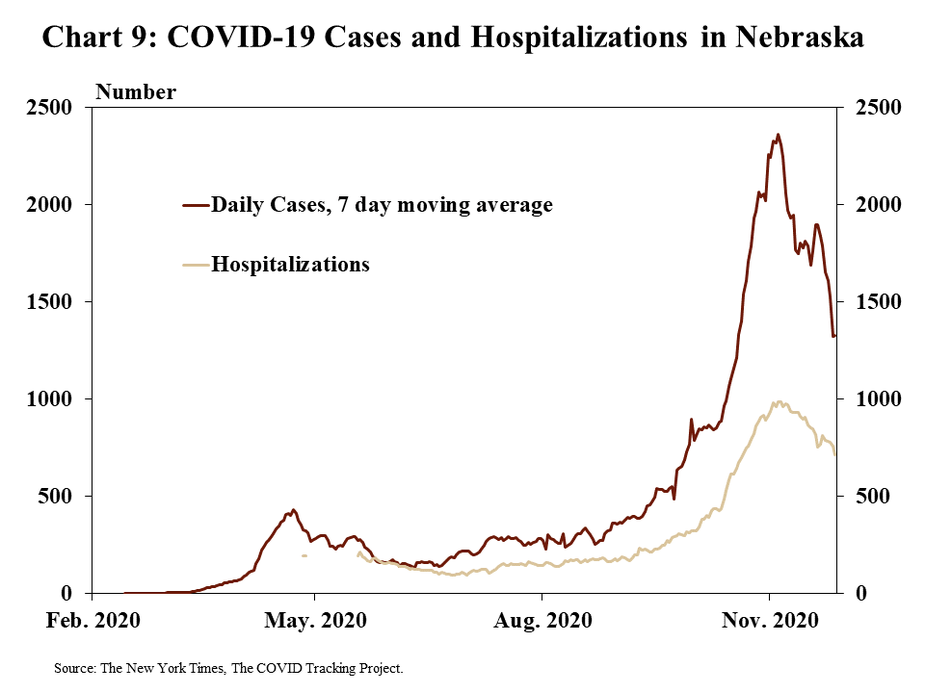
With the increased spread of the virus and broad ongoing economic effects, a larger share of small businesses have reported recent closures. In the initial months of the pandemic, nearly 30% of small businesses reported closing due to the pandemic, before recovering somewhat during the summer (Chart 10). Although the share of small businesses continuing to operate in Nebraska has remained higher than the nation throughout the pandemic, more firms have closed in recent weeks. As of the end of November, the number of small businesses open in Nebraska was 18% less than in January, after having improved to only 13% less a few months ago.
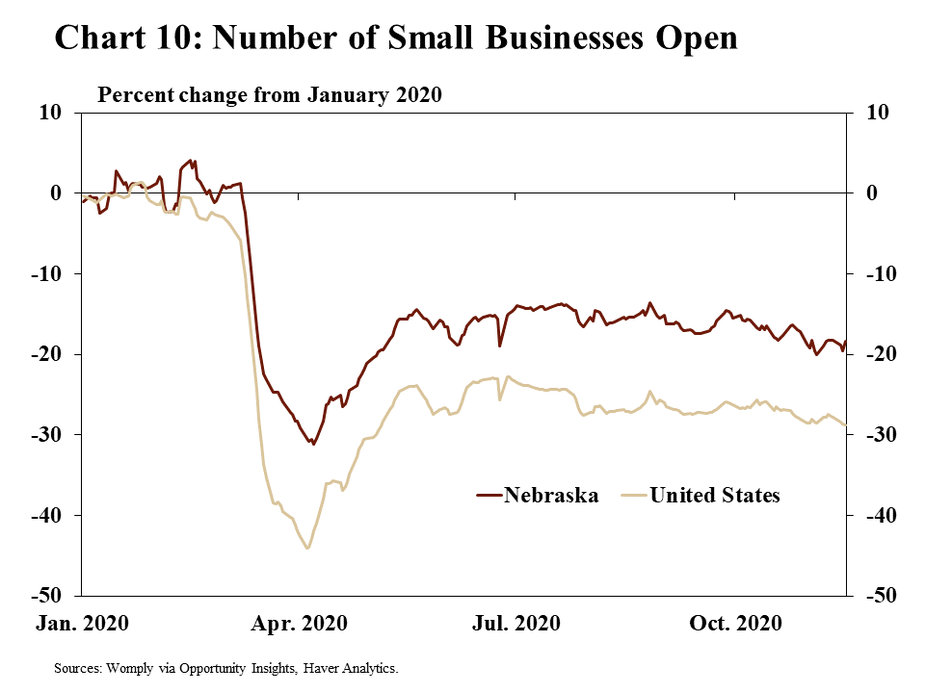
Perhaps most importantly, small business have continued to extend their expectations for a return to normal operations. In April, 28% of small businesses in Nebraska indicated a return to normal levels of business activity was at least six months away (Chart 11). The outlook has consistently been more negative for the nation. However, as of November, a larger share of small businesses indicated a minimum of six months was still needed for a return to normal. The Nebraska average in November is the highest over the period the Census has conducted the small business pulse survey and is nearly 20 percentage points higher than the average in April.
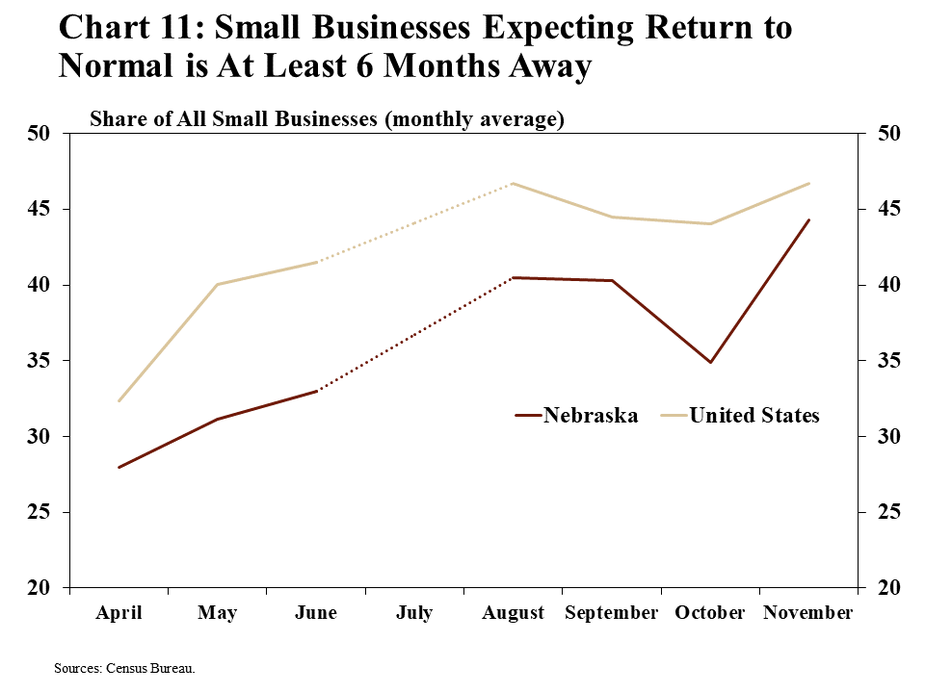
Conclusion
Many economic indicators in Nebraska have remained stronger than the nation at year-end, including those representative of conditions among small businesses. In recent weeks, however, business activity has slipped, despite prospects of widespread vaccine distribution in the coming months. As Nebraska’s small business community accounts for a large share of employment, and the livelihoods of many households, a sustained recovery for small-sized firms will be crucial to the state’s longer-term outlook. A return to normal levels of activity has remained elusive for many firms, as the pandemic continues to test the state’s economic resilience.
